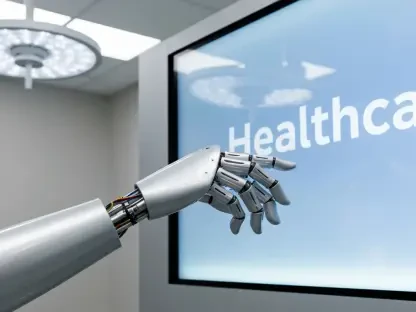I’m thrilled to sit down with Faisal Zain, a renowned healthcare expert with deep expertise in medical technology. With years of experience in the manufacturing of medical devices for diagnostics and treatment, Faisal has been at the forefront of innovation in the field. Today, we’re diving into a groundbreaking initiative focused on tech-enabled aging at home, a project that aims to transform how older adults live independently and safely. Our conversation explores the challenges of aging in place, the role of technology in overcoming barriers, the importance of collaboration across industries, and the vision for a future where digital tools empower seniors to thrive in their own homes.
How did the idea of launching an initiative for tech-enabled aging at home come about, and what inspired this focus?
The inspiration came from a clear and urgent need. As we see an increasing number of older adults wanting to age in their own homes, we recognized that the current systems and technologies just aren’t fully equipped to support that desire. Many seniors face issues like safety risks, affordability constraints, and a lack of coordinated care. We saw an opportunity to leverage digital health technologies to address these challenges head-on. The goal was to create a framework that not only helps older adults stay independent but also ensures they can do so with dignity and connection to their communities.
What are some of the most pressing challenges for older adults that this initiative aims to tackle?
One of the biggest challenges is safety—things like fall risks or medical emergencies that can happen without immediate help nearby. Then there’s affordability; many seniors are on fixed incomes and can’t easily access or maintain the tech solutions that could help them. Another issue is the fragmentation of care and technology. Current solutions often don’t talk to each other, leaving gaps in support. Our initiative is focused on creating integrated, accessible, and cost-effective tools that address these pain points directly.
With 10,000 Americans turning 65 every day, how does this demographic shift shape the urgency of your work?
It’s a massive wake-up call. By 2030, one in five Americans will be a senior citizen, and the majority of them want to stay in their homes and communities. This growing population puts immense pressure on healthcare systems and highlights the need for scalable solutions now. If we don’t act, we risk leaving millions without the support they need to live independently. It’s not just about numbers; it’s about ensuring quality of life for an entire generation, which drives us to innovate with a sense of purpose and urgency.
Can you walk us through what you mean by a ‘digital blueprint’ for aging in place and why it’s so critical?
The digital blueprint is essentially a comprehensive, evidence-based plan to integrate technology into the aging process. It’s a roadmap for how we can use connected health solutions—think remote monitoring, smart home tools, and virtual care—to support seniors at home. It’s critical because it’s not just about introducing gadgets; it’s about ensuring these tools work together seamlessly, are backed by solid data, and align with real needs. This blueprint helps us move from fragmented efforts to a unified strategy that prioritizes safety, independence, and sustainability.
How are you addressing barriers like affordability and safety for seniors who want to age in their current homes?
Affordability is a huge focus. We’re exploring technologies that can be scaled to reduce costs, like subscription-based monitoring systems or partnerships with payers to subsidize devices. On the safety front, we’re looking at innovations like fall detection sensors and radar-based monitoring that can alert caregivers to issues in real time. The idea is to create solutions that don’t just react to problems but prevent them, giving seniors and their families peace of mind without breaking the bank.
You’ve highlighted the lack of integration in current aging technologies. Can you share an example of how this creates problems for older adults?
Absolutely. Imagine a senior using a wearable device to track vital signs, but that device doesn’t connect with their telehealth platform or their doctor’s system. If there’s an issue, the data isn’t shared automatically, leading to delays in care. This kind of disconnect is common in what we call ‘AgeTech.’ It creates frustration and, more importantly, risks. Our initiative is working to ensure interoperability so that all these tools communicate effectively, creating a cohesive support system around the individual.
With such a diverse group of partners involved, how do you ensure everyone is working toward the same vision?
Collaboration is key, but it’s not always easy with so many stakeholders—home healthcare providers, tech innovators, and health systems all bring different perspectives. We start by aligning on a shared goal: enabling safe and dignified aging at home. From there, we define clear roles and foster open communication to ensure everyone’s expertise contributes to the bigger picture. Regular check-ins and a focus on evidence-based outcomes help keep us on track, ensuring that no one’s efforts are siloed.
How does aligning with federal priorities enhance the impact of this initiative?
Aligning with federal priorities gives us a powerful tailwind. The government’s push for digital tools and data sharing in healthcare, especially for Medicare beneficiaries, means there’s support for policies and funding that can scale our solutions. It also ensures we’re building technologies that fit within national standards for interoperability and regulation. This alignment helps us move faster and ensures that what we develop is sustainable and accessible to the people who need it most.
What is your forecast for the future of tech-enabled aging at home over the next decade?
I’m incredibly optimistic. I believe we’ll see a shift where technology becomes an invisible but essential part of aging at home—think homes equipped with smart systems as standard, much like electricity or plumbing today. We’ll likely see greater personalization, with AI and data analytics tailoring care to individual needs in real time. And as reimbursement models evolve, I expect these solutions to become more accessible, reducing disparities. Ultimately, the next decade could redefine aging, making it a time of independence and connection rather than limitation, if we continue to innovate and collaborate effectively.









